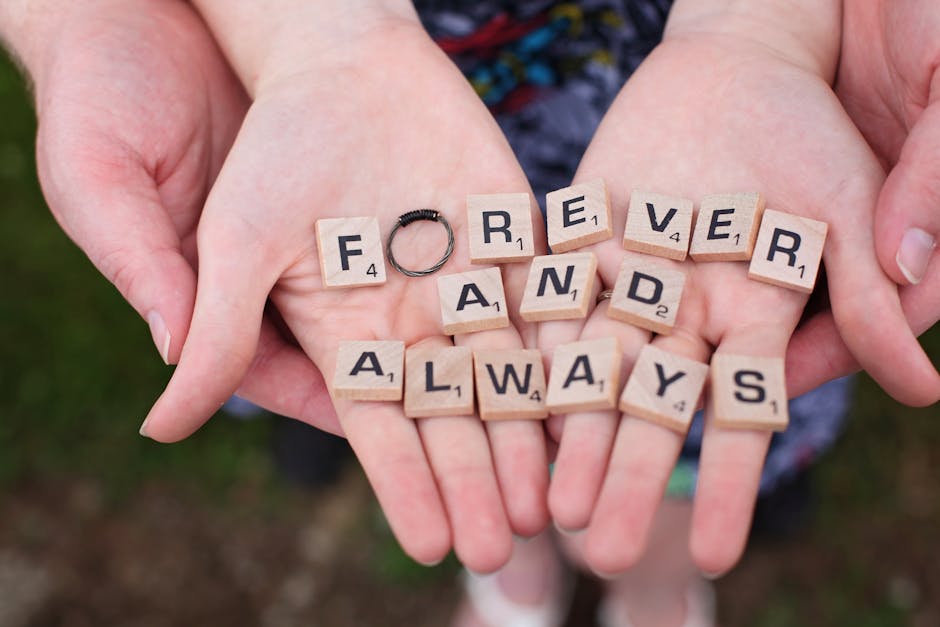Big Read
Big Read
“She doesn’t need a seat” or “he’s a troublemaker”. Such perceptions are just some of the challenges that people with invisible disabilities face.
(Illustration: CNA/Nurjannah Suhaimi)
This audio is generated by an AI tool.
Two years ago, Eric, who is autistic, experienced a severe anxiety attack while on the platform of Jurong East MRT station after he discovered that he had forgotten his home keys.
Overwhelmed with emotions, the then 16-year-old collapsed on the floor, crying and shaking uncontrollably.
Desperately trying to self-regulate – a common coping mechanism for autistic individuals facing sensory overload – Eric sought out a passerby for help by running up to him in a panicked state.
But the man misinterpreted Eric’s actions as a threat to him, and promptly alerted a security guard at a nearby shopping mall to intervene. Eventually, the guard called Eric’s parents, who arrived to take him home and help him recover.
Recalling the incident in an interview with CNA TODAY, Eric (not his real name) said such moments are terrifying for him, as he is often not aware of his actions when he is in the throes of an anxiety attack, or how the public is reacting to him.
“It’s complicated because you do things you don’t mean and (these anxiety attacks emerge) out of the blue,” he said.
“When you do those things, people assume that you’re trying to hurt them, and they’ll call the authorities on you… What they don’t know is, we’re trying to express it in a way that’s understandable to us.”
Eric’s experience highlights a perennial concern: despite efforts to improve awareness, individuals with invisible disabilities – such as autism, epilepsy and intellectual disabilities – say that they still face impatience, scepticism, and exclusion.
A report released by the Ministry of Social and Family Development (MSF) in December showed that positive attitudes towards persons with disabilities (PWDs) from the public fell in 2023 compared to 2019.
The report revealed a rise in negative sentiment among the public, from 1.8 per cent to 2.5 per cent. At the same time, the proportion of people who expressed “extremely positive” or “moderately positive” feelings declined significantly, from 76.8 per cent to 68.9 per cent.
The study also revealed that autism saw the largest decrease in positive perception, from 69.9 per cent in 2019 to 56.2 per cent in 2023. People who felt negatively about those with autism shot up to 9 per cent last year from 3.8 per cent.
Negative sentiments towards those with intellectual and sensory disabilities also rose 2.4 per cent and 1.4 per cent.
In contrast, positive attitudes towards persons with physical disabilities saw a smaller dip of less than 1 per cent, from 85.8 per cent in 2019 to 84.9 per cent in 2023.
While the study does not make any conclusions about this disparity, those with disabilities that are not immediately apparent to others spoke to CNA TODAY about how such unhappy encounters in public are all too common.
This comes despite the barrage of public education efforts and social media trends that espouse greater awareness of persons with disabilities (PWDs), as well as media stories on why people should not be defined by their health conditions.
Ms Lee May Gee, chief executive officer of SG Enable, said that PWDs face various challenges across different aspects of their lives due to societal misconceptions and stereotypes.
SG Enable, a registered charity set up by the MSF in 2013, seeks to help people with disabilities live and work in an inclusive society.
However, Ms Lee added that people with invisible disabilities may face a greater lack of awareness or understanding as their disabilities “can be less evident to others”.
“Invisible disabilities” cover a range of conditions – such as autism and intellectual disabilities – that significantly impact daily life but lack outward markers, unlike physical disabilities. However, invisible disabilities exclude mental health conditions such as depression and anxiety, which are not classified as disabilities in Singapore.
“To avoid stigma and discrimination, persons with disabilities may choose not to disclose their disability,” said Ms Lee. “This may result in their struggles being overlooked, which may lead to isolation and inadequate support.”
Singapore is not alone in these challenges; people with invisible disabilities face similar struggles worldwide.
In the United Kingdom, for instance, individuals with less visible disabilities frequently face workplace discrimination, with employers questioning their need for adjustments, such as flexible hours.
A 2023 UK parliamentary report found that people with these conditions said faced criticism when trying to access facilities designed for disabled people and experienced worse discrimination during the COVID-19 pandemic for not wearing a mask in public.
In Eric’s case, life is rough to be on the receiving end of negativity from the public in recent years too, given his need to make some noise or seek space as a way to cope with overwhelming sensory input or emotional stress.
For instance, he would attempt to regain a sense of control and stability by shouting “go away” and try to create as much space between him and those around him.
In the past, people might give him a wider berth, but nowadays he fears being arrested or filmed and shamed on social media during his public outbursts.
“It’s hard to live my life because I don’t feel motivated to go out. I feel like doing everything at home rather than exposing myself to all the overwhelming stressors,” he said.
For caregivers, it is also frustrating to constantly shield the PWDs they are caring for from negative encounters with the public.
Yet, some public spaces remain challenging, some workplaces still lack sufficient accommodations, and asking for help from the public is often met with resistance or misunderstanding, several caregivers told CNA TODAY.
Eric’s mother said that she and her husband used to feel judged by the “stares” from others for their supposedly “poor parenting” whenever her son threw public tantrums as a child.
“We get those stares all the time. I got used to it, but now it’s different because he looks like an adult,” said the 47-year-old regional director who wanted to be known as Carrie.
Rude stares are the least of her concerns nowadays, she added.
“I fear that people might even retaliate because they think Eric is a troublemaker… If (the member of the public) is hot-tempered, he might think that Eric is doing it intentionally when he is not,” Carrie added.
To better understand the lived experiences of those with invisible disabilities and the reasons public attitudes towards them have changed over the years, CNA TODAY spoke to PWDs, their caregivers as well as disability organisations to share their stories and what can be done to move the needle.
In response to queries from CNA TODAY, an MSF spokesperson said that while its study did not pinpoint specific reasons for the decline in positive perceptions of individuals with sensory disabilities, intellectual disabilities, and autism, it found that public attitudes were linked to how often people interacted with persons with disabilities.
“Respondents who had contact with persons with disabilities at least twice in the past year reported significantly more positive attitudes compared to those who had no contact,” added the spokesperson.
Agreeing, Ms Cassandra Chiu, president of the Disabled People’s Association (DPA), said: “There have been many studies that show that the more you hang out with someone who is different, the more you get to know them, the less intimidating or scary or different they become and therefore, more positive sentiments towards someone different.”
While it is difficult to speculate on why positive attitudes dipped without knowing the survey questions, Ms Chiu suggested that one possible reason could be the safe distancing measures implemented at the height of the coronavirus pandemic.
“COVID-19 disproportionately kept disabled people at home,” she said. “All the safe-distancing measures were really hard to navigate, and a lot more disabled people were stuck at home.”
She noted that some PWDs might have comorbidities, and leaving the house unnecessarily during the pandemic would have been dangerous for them.
Hence, people might have seen and interacted with fewer PWDs in shared spaces such as the workplace, supermarkets, shopping malls and places of worship.
While Singapore has made significant progress in accessibility and inclusivity, more can still be done, experts and advocates told CNA TODAY.
Ms Jacelyn Lim, executive director of Autism Resource Centre Singapore, or ARC(S), said the dip in positive attitudes towards those with less visible disabilities in the workplace could be attributed to the gaps in awareness and knowledge of how to interact and work with them.
“Autism is a spectrum and it affects each individual in different ways,” said Ms Lim, noting that challenges related to social communication, flexibility, and sensory processing may not be immediately visible to others.
She explained that individuals on the autism spectrum may face challenges with understanding non-verbal communication, such as facial expressions and tone of voice, making social interactions difficult since at least 70 per cent of human communication is non-verbal.
Many also thrive on routine and may struggle with unexpected changes, requiring more time to adapt to new schedules or unfamiliar environments. Sensory sensitivities, such as heightened reactions to noise, touch, or crowded spaces, can cause discomfort or distress to autistic individuals, said Ms Lim.
Some employers may overlook the challenges faced by those on the autism spectrum due to their strong academic achievements, while others focus on these employees’ limitations and fail to recognise their strengths and contributions.
Ms Michelle Tay, executive director of the Singapore Kindness Movement, added that because visible disabilities are “more readily apparent”, it can lead to greater awareness and “more noticeable support”.
“However, invisible disabilities are frequently misunderstood, leading to judgement, impatience, and lack of accommodation,” she said.
“This makes it crucial to raise awareness and promote a more nuanced understanding of diverse needs.”
When it comes to peers and loved ones, the greater social awareness of disabilities nowadays does help to start important conversations that better their understanding of those with hidden disabilities, several PWDs told CNA TODAY.
But for the general public, growing awareness does not automatically translate into greater understanding, tolerance and acceptance, they added.
For Ms Husnah Jamaludin, who is autistic, the biggest shift in attitudes has come from her immediate family members.
“Learning a bit about autism has enabled them to understand me slightly better than before and helped somewhat with communication,” said the 34-year-old, a DPA board member who used to work in the tech industry.
“With the general public, I think that understanding may have stayed the same or maybe even worsened, although awareness has increased,” said Ms Husnah.
Awareness of invisible disabilities like autism mostly comes from social media content or shows featuring autistic characters. She cites recent shows such as the US and Korean versions of The Good Doctor, Extraordinary Attorney Woo and Atypical, and the Malaysian movie Redha.
However, Ms Husnah said most people would either not verify the information they’ve received, have an oversimplified view of autism itself, or “paint every autistic individual with the same brush” when every individual each have their unique struggles and varied experiences.
“Unfortunately, awareness itself does not necessarily equate to understanding.”
Ms Husnah said because autism is usually “hidden”, people sometimes tell her “you don’t look like you have a disability”, or she has to clarify some misconceptions about her condition.
Mr Low, who has epilepsy and declined to give his full name, said that even though people are generally more aware of epilepsy, there are still some who believe it is a mental health condition and not a neurological disorder.
Epilepsy is a neurological condition causing recurrent seizures, marked by sudden bursts of abnormal brain activity that can lead to convulsions, sensory changes, or loss of consciousness.
“You still find pockets of people who don’t understand and refuse to understand despite all the medical evidence,” said the self-employed 36-year-old consultant.
Though people are generally more aware about PWDs, Mr Low still opts for the safer “don’t ask, don’t tell” approach when it comes to disclosing his condition at the workplace.
He still remembers how, one month into a corporate job 10 years ago, Mr Low was asked to leave the next day after he had a seizure – because he did not declare his condition, according to the human resource personnel at the company.
One woman with epilepsy, who wanted to be known only by her initials YM, added that there are still many people who lack knowledge about the condition and would dismiss it as something minor, like “just another fever or flu”.
The 40-year-old, who works in the finance industry, said because of her epilepsy, she will suddenly get confused when getting from one point to another. This is especially apparent when she changes MRT lines and sometimes walks in circles.
“I can see people looking at me. Maybe they might think I’m behaving suspiciously from the way I’m circling around the station,” she said.
Due to her epilepsy, YM is very careful about where she goes to avoid triggering a seizure and avoid areas that can be dangerous and possibly life-threatening if she were to have a seizure.
With epilepsy, the danger is sometimes not the seizure in itself but the other physical injuries sustained by the individual during the seizure.
For instance, a fall resulting from a seizure in parks with sharp rocks or places near main roads could be fatal for YM.
She shared that she still occasionally gets insensitive comments from colleagues, such as suggestions that she shouldn’t stay home so much or spend more time in the sun, which can be quite “upsetting” for her.
These comments are often in response to YM’s preference for minimising her participation in company events.
For Ms Jade Ow, 22, who was born with moderate-severe bilateral sensorineural hearing loss, she often finds herself either being treated “like a child” or being told that she is too “normal to be considered disabled”.
Because Ms Ow uses a combination of lipreading and speech-to-text interpreters to understand conversations, people usually think she is paying a lot of attention to them because she is always looking intently at them when they speak.
“They’re surprised and confused when I have to tell them to repeat themselves,” said the National University of Singapore undergraduate and theatre actress with ART:DIS.
Ms Ow said there had been times when people got frustrated with her when she didn’t understand what they were saying and asked them to repeat themselves.
“They already have a stereotypical image of what deafness or disability looks like, and I do not fit their stereotype,” she said.
Nowadays, Ms Ow noted that most of her peers are usually “very understanding” and willing to hear exactly how she wishes to be treated as a person.
She added that this could be very much linked to social media advocacy efforts on disability and other minority groups, and her peers are conditioned to be more aware and empathetic about the way they interact.
“While there is still work left to be done, generally, people are trying to do better,” Ms Ow said.
Asking for help can be challenging for those with less visible disabilities, as some people may assume that they do not need assistance or, worse, think that they are faking it.
Mr Matthew Job Tan, who is a traumatic brain injury survivor, said public attitudes towards those with invisible disabilities have worsened. He noted that people are less willing to give up their seats on the train, even though he is wearing the yellow lanyard under the Land Transport Authority’s (LTA) “Helping Hand” scheme.
One of the scheme’s features is to provide PWDs with a visible “May I have a seat please?” identifier, which helps commuters with non-visible health conditions alert other commuters that they would appreciate a seat.
“People’s attitudes have worsened because they will pretend not to see me,” said Mr Tan, 30, though he also wonders whether people are just too glued to their phone screens to notice.
The nursing home employee said that a brain injury sustained during a judo competition 14 years ago left him with left hemianopia, which impairs his ability to see anything on the left side of his field of vision.
His speech is also affected, and Mr Tan said his brain cannot process information as quickly as well. He walks with a limping gait as his brain often cannot coordinate with the muscles in his legs.
Once, when Mr Tan was on the train sitting in the “priority seat”, a pregnant woman tapped him and told him to give up his seat.
“It made me feel more ashamed, and even though I’m young, I need the seat,” he said. “I didn’t have the guts to say I needed the seat.” Mr Tan did give up the seat for the pregnant woman in the end.
Singapore has taken several steps to be more inclusive of people with invisible disabilities. For example, the Land Transport Authority’s “Helping Hand” scheme, led by the Caring SG Commuters Committee, aims to create a more caring, welcoming and inclusive public transport system.
One of the key features of the scheme is the “May I have a seat please?” identifier, which helps commuters with non-visible health conditions, such as chronic pain or arthritis and disabilities, request for a seat from other commuters discreetly.
Since the scheme was launched, two other identifiers – “This is a wheelchair” and “Please alert me when I am approaching my stop” – have been introduced, an LTA spokesperson told CNA TODAY.
These identifiers, in the form of lanyards with cards and stickers, are free of charge at the passenger service centre or office located at MRT stations and bus interchanges or terminals or at selected SimplyGo Ticket Offices.
Commuters do not need to provide a doctor’s note or proof of their condition for all three identifiers to receive the card and/or sticker.
The spokesperson added: “Feedback has been positive, with commuters highlighting that the scheme has encouraged more caring behaviour and raised awareness of commuters who needed assistance.”
The LTA is aware that there remain challenges in getting a seat in some instances, even when passengers use the “May I have a seat please” lanyard and card, the spokesperson said.
This could be because the person occupying the seat also requires it, or sometimes commuters might be too preoccupied to notice those in need.
“Hence, a gentle reminder encouraging commuters to be gracious and more aware of their surroundings remains useful, for example, through posters at public transport nodes,” the spokesperson added.
Apart from public transit, it is increasingly normal for events and concert organisers to cater for those with less apparent disabilities, such as by introducing ample signs warning people of the risk of epileptic seizures.
Freelance sign-language interpreters at the Coldplay concert earlier this year made headlines after videos of them performing in sync with the music went viral, with many lauding concert organiser Live Nation’s inclusive efforts.
Over at Access Path Productions, the organisation collaborates with theatre companies in Singapore to facilitate relaxed performances designed for neurodivergent audiences and individuals with sensory sensitivities.
These performances adapt traditional theatre settings by reducing potentially overwhelming elements such as sudden loud noises and flashing lights, creating a more inclusive environment.
“The heart of what I do and the bedrock of my work at Access Path Production is for a paradigm shift to happen, to challenge what ‘normal’ means,” said Ms Grace Lee-Khoo, founder and applied theatre practitioner.
Access Path Productions also offers performances designed for deaf and hard-of-hearing audiences. These performances incorporate sign language interpretation, visual storytelling, and other accessible elements to ensure full engagement with the theatre.
“When non-disabled people come to my shows, they cannot unlearn (and) unsee how the system is stacked against deaf and disabled people,” said Ms Lee-Khoo.
They also produce theatre productions that challenge stereotypes about disability, amplifying the voices and stories of disabled artists.
Ms Clydia Tan, who has bilateral sensorineural hearing loss and Ménière’s disease, a disorder of the inner ear, said: “It gets trickier with invisible disabilities because there’s a lot of judgement that comes with it.”
This often comes in the form of remarks such as “she doesn’t look like she needs the seat”, “he looks fine”, or “she’s just faking it to gain sympathy”, said the 26-year-old nurse.
Ms Tan said people with hearing loss, as well as those with other less visible disabilities, would need to somehow provide proof that they are deserving of reasonable accommodations.
“There are a lot of factors that go into what we define as true accommodation and how people react to it,” said Ms Tan, who uses a hearing aid in her right ear and has a cochlear implant in her left ear.
“Though I do have assistive hearing devices to help me with my daily living, I still struggle with communication on a daily basis.”
Ms Tan said that most people, upon first meeting her, don’t realise she is deaf. It’s only through conversation that they realise that she may have difficulty hearing.
“There’s a lot of listening fatigue, especially after a long work day. Though I can hear, I still (need) to lip-read on top of hearing to fully grasp the conversation,” she said.
For many caregivers of individuals with invisible disabilities, constant hypervigilance is required to shield their loved ones from being unfairly judged and misunderstood in public spaces.
Parents Nurul Dhamirah Adam and Muhammad Fazli Zailani said they have to constantly watch their six-year-old son, Adam, who is autistic, to prevent any unpleasant spats or misunderstandings.
“We watch him because of unintentional behavioural problems that might arise,” said Ms Dhamirah. These include Adam not waiting for his turn to do something, not learning social cues, accidentally pushing other children, or being pushed by them.
“If people do not know him, they won’t know that Adam’s autistic because he looks just like any other kid,” said Mr Fazli, 32, who is also self-employed.
While some will realise Adam is autistic after interacting with him, there may be others who will still think “this boy is weird”, he added.
Ms Dhamirah remembers an incident at Jacob Ballas Children’s Garden at the Botanic Gardens, when she briefly glanced away from Adam and her daughter playing on the trampoline.
“Usually, my eyes are always fixed on my kids … I looked away for two seconds; an incident happened where a girl’s dad had already stepped up and was lashing out (at them),” said the self-employed 31-year-old mother.
She tried to calm the angry father down and told him that Adam is a special needs child. However, the man “got even angrier” and said: “If he’s a special needs child, you should be looking at him.”
Her daughter later said that Adam was just jumping and happened to hold on the shoulder of the man’s daughter, at which point the girl sat down on the trampoline, making it look like she had fallen.
“It bothered me for a few days,” Ms Dhamirah said, adding that the man would have berated Adam if she was not standing there.
“Adam … can’t even respond for himself and understand what’s happening. I think that’s just very traumatising for all of us.”
For YM, who has epilepsy, it is also dangerous for her to be alone, as the onset of a sudden seizure can lead to situations where she can get seriously injured or require immediate assistance.
As such, YM’s husband is constantly tracking her phone for her location and carries an oxygen tank along with her medication with him whenever they are going out together.
Her husband also tries to take leave from work as much as possible to accompany YM when she needs to leave the house.
“People who don’t understand this illness will think that I’m overreacting, or (my husband is) overprotective, and think this illness is not so serious,” said YM, whose husband is her main caregiver.
Although Singapore has made significant progress in enhancing accessibility in public spaces and promoting inclusive hiring practices, experts and advocates emphasised that true inclusivity depends not just on government policies but also on the attitudes and actions of Singaporeans.
SG Enable’s Ms Lee said: “Beyond policy, inclusivity needs to come from Singapore’s core: its people. The societal shift to inclusion, beyond acceptance, is key in making this a reality.”
“When we cater to the needs of persons with disabilities, we cater to the rest of society. We need to move from sympathy to empathy – to see past the disability, focus on abilities, and make inclusion the norm.”
She added: “Making communities more accessible and inclusive not only benefits persons with disabilities, but it benefits everyone because it caters to diversity that is inherent in any society.”
Agreeing, Ms Lim from ARC(S) said: “Beyond understanding, we need greater acceptance of different ways of thinking, acting, and communicating.”
For that to happen, Ms Lim said the public plays an important role in creating a more inclusive environment by removing barriers that prevent participation, such as negative attitudes or misconceptions about autistic individuals.
She said this can happen when encountering someone distressed or acting a little out of the norm.
“Instead of staring at them, we could check to ensure they are okay or even reach out and offer help,” said Ms Lim. “These small actions will go a long way.”
Another way society can do better is through education and learning about the disability community.
Mr Low, who has epilepsy, noted that true inclusion must be a “whole-of-society” approach involving education about the experiences of those with invisible disabilities.
Ms Husnah, who is autistic, said she does not expect everyone to be an expert or “on the same level as medical professionals”, but at the very least, having some basic knowledge and understanding of disabilities would be a “huge help” and a step in the right direction.
To foster more positive interaction with PWDs, Ms Chiu, from the DPA, said it should involve “people meeting people, not people meeting ‘superstars’”.
She noted that while the achievements of persons with disabilities are commendable, they often represent the public’s only interaction or exposure to the community, which can sometimes lead to placing PWDs on a pedestal.
Rather than pushing the narrative that PWDs always have to be “extraordinary”, Ms Chiu said true inclusion means knowing them as ordinary, everyday people who can be their neighbours, colleagues, or friends.
As one of the main caregivers of a seven-year-old autistic daughter, Ms Rashidah Rashid said: “It starts with us, the parents, to open up and talk more about autism.”
The 36-year-old operations manager said she has seen instances where people “hide their children” and never speak about their children’s neurodivergence, which continues to perpetuate the stigma against autism.
Her daughter, Safiyah, is enrolled at My Inspiring Journey (MIJ) Hub, a non-profit organisation that offers educational services to individuals with intellectual disabilities aged three to 30.
“The first step is for people to share. When you talk about it, maybe someone else might have an autistic child who could get advice or help,” said Ms Rashidah.
For Ms Ow, the undergraduate who is deaf, and many in the community, true inclusion occurs when PWDs can access the same social, cultural, and financial capital as everyone else without feeling like they need to overcome hurdles.
“True inclusion looks like a world where I never have to fear that revealing my disability means I will be treated differently from someone who is non-disabled,” said Ms Ow.
Get our pick of top stories and thought-provoking articles in your inbox
Stay updated with notifications for breaking news and our best stories
Get WhatsApp alerts
Join our channel for the top reads for the day on your preferred chat app
Copyright© Mediacorp 2024. Mediacorp Pte Ltd. All rights reserved.
We know it’s a hassle to switch browsers but we want your experience with CNA to be fast, secure and the best it can possibly be.
To continue, upgrade to a supported browser or, for the finest experience, download the mobile app.
Upgraded but still having issues? Contact us











Leave feedback about this